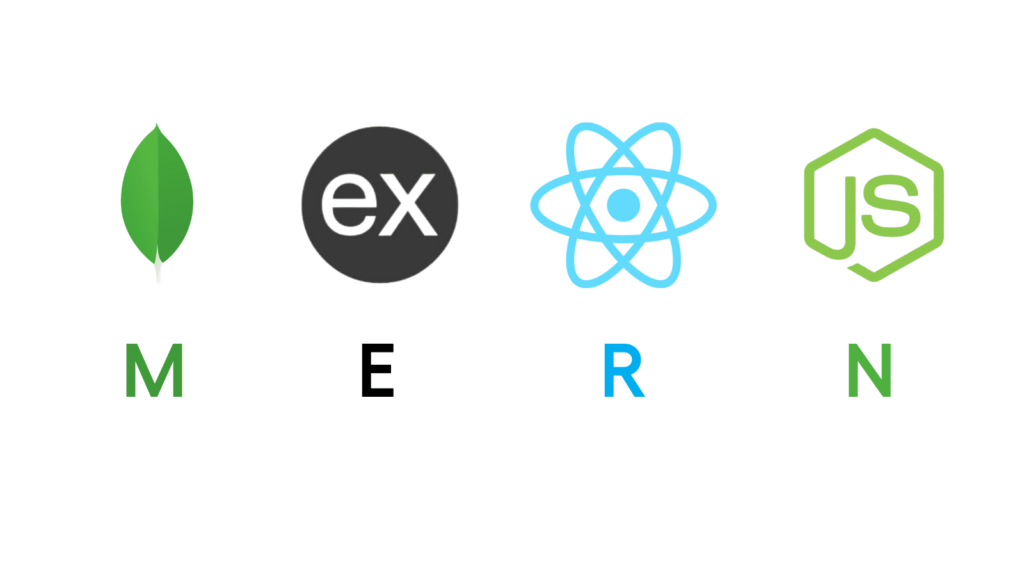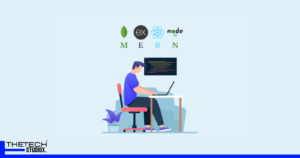Table of Contents
Introduction to the MERN stack
As a web developer, I have always been looking for the best technologies to build robust and efficient web applications. One such technology stack that has gained immense popularity in recent years is the MERN stack. In this article, I will introduce you to the MERN stack and discuss its advantages for web application development.
The MERN stack is a combination of four powerful technologies: MongoDB, Express.js, React, and Node.js. MongoDB is a NoSQL database that allows for efficient storage and retrieval of data. Express.js is a flexible web application framework for Node.js that simplifies the process of building scalable web applications. React is a JavaScript library for building user interfaces, and Node.js is a server-side JavaScript runtime that allows for the execution of JavaScript code outside of a web browser.

What is a web application?
Before we dive into the impressive examples of web applications built with the MERN stack, let’s first understand what a web application is. A web application, also known as a web app, is a computer program that runs on a web server and is accessed by users through a web browser. Unlike traditional desktop applications, web applications do not need to be installed on a user’s computer and can be accessed from any device with an internet connection.
Web applications can range from simple static websites to complex platforms with dynamic content and interactive features. They are typically built using a combination of front-end and back-end technologies. The front-end is responsible for the user interface and user experience, while the back-end handles the logic and data processing.
Advantages of using the MERN stack for web application development
Now that we have a basic understanding of web applications, let’s explore the advantages of using the MERN stack for web application development. The MERN stack offers several benefits that make it a popular choice among developers.
Firstly, the MERN stack is based on JavaScript, which is a widely-used programming language for web development. This means that developers can use a single language throughout the entire development process, from the front-end to the back-end. This makes the development process more efficient and reduces the learning curve for developers.
Secondly, the MERN stack is highly scalable and flexible. MongoDB, the database component of the MERN stack, is designed to handle large amounts of data and can easily scale horizontally. Express.js and Node.js, the server-side components, are known for their ability to handle high levels of traffic and concurrent requests. This makes the MERN stack suitable for building web applications that need to handle a large number of users or process a large amount of data.
Lastly, the MERN stack promotes code reusability and modularity. React, the front-end component of the MERN stack, allows developers to build reusable UI components, which can be easily combined to create complex user interfaces. This makes it easier to maintain and update the codebase, as changes made to one component do not affect other components.
Now that we have explored the advantages of using the MERN stack, let’s take a look at some impressive examples of web applications built with this technology stack.
Here is The 10 Examples of Web Applications
Example 1: E-commerce platform built with the MERN stack
One impressive example of a web application built with the MERN stack is an e-commerce platform. With the MERN stack, developers can build a feature-rich e-commerce platform that includes functionalities such as product listing, shopping cart, payment processing, and order management.
The MongoDB database can be used to store product information, customer details, and order history. Express.js and Node.js can handle the server-side logic, such as handling product searches, managing user authentication, and processing payments. React can be used to build the user interface, with components for displaying product listings, adding items to the cart, and completing the checkout process.
By using the MERN stack, developers can create an e-commerce platform that is fast, scalable, and responsive. The modular nature of React allows for easy customization and extensibility, making it possible to add new features and functionalities to the platform as the business grows.
Example 2: Social networking site built with the MERN stack
Another impressive example of a web application built with the MERN stack is a social networking site. With the MERN stack, developers can build a platform that allows users to create profiles, connect with friends, share updates, and interact with each other.
The MongoDB database can be used to store user profiles, friend connections, posts, comments, and likes. Express.js and Node.js can handle the server-side logic, such as user authentication, post creation, and notification management. React can be used to build the user interface, with components for displaying user profiles, news feeds, and interactive features like liking and commenting on posts.
By using the MERN stack, developers can create a social networking site that is highly interactive, responsive, and user-friendly. The real-time capabilities of React make it possible to display updates and notifications in real-time, providing a seamless user experience.
Example 3: Project management tool built with the MERN stack
A project management tool is another impressive example of a web application built with the MERN stack. With the MERN stack, developers can build a tool that allows teams to collaborate, track tasks, and manage projects efficiently.
The MongoDB database can be used to store project details, task lists, user information, and deadlines. Express.js and Node.js can handle the server-side logic, such as user authentication, task assignment, and project tracking. React can be used to build the user interface, with components for creating projects, assigning tasks, and monitoring progress.
By using the MERN stack, developers can create a project management tool that is intuitive, customizable, and scalable. The modular structure of React allows for easy addition of new features and integrations, making it possible to tailor the tool to the specific needs of the team.
Example 4: Online learning platform built with the MERN stack
An online learning platform is another impressive example of a web application built with the MERN stack. With the MERN stack, developers can build a platform that offers courses, quizzes, and interactive learning materials.
The MongoDB database can be used to store course content, user progress, quiz results, and user feedback. Express.js and Node.js can handle the server-side logic, such as user authentication, course enrollment, and quiz grading. React can be used to build the user interface, with components for displaying course content, tracking progress, and taking quizzes.
By using the MERN stack, developers can create an online learning platform that is user-friendly, engaging, and scalable. The flexibility of React allows for the creation of interactive learning materials, such as videos, quizzes, and interactive exercises.
Example 5: Real estate listing platform built with the MERN stack
A real estate listing platform is another impressive example of a web application built with the MERN stack. With the MERN stack, developers can build a platform that allows users to search for properties, view property details, and connect with real estate agents.
The MongoDB database can be used to store property listings, user profiles, and agent information. Express.js and Node.js can handle the server-side logic, such as property search, user authentication, and agent connections. React can be used to build the user interface, with components for displaying property listings, filtering options, and contact forms.
By using the MERN stack, developers can create a real estate listing platform that is efficient, user-friendly, and visually appealing. The powerful search capabilities of MongoDB make it possible to provide accurate and relevant property search results, while the modular nature of React allows for easy customization of the user interface.
Example 6: Food delivery app built with the MERN stack
A food delivery app is another impressive example of a web application built with the MERN stack. With the MERN stack, developers can build a platform that allows users to browse restaurants, place orders, and track deliveries.
The MongoDB database can be used to store restaurant menus, user profiles, order details, and delivery information. Express.js and Node.js can handle the server-side logic, such as restaurant search, user authentication, and order tracking. React can be used to build the user interface, with components for displaying restaurant menus, order customization, and delivery tracking.
By using the MERN stack, developers can create a food delivery app that is fast, reliable, and user-friendly. The real-time capabilities of React make it possible to display real-time updates on order status, providing users with a seamless and transparent ordering experience.
Example 7: Healthcare management system built with the MERN stack
A healthcare management system is another impressive example of a web application built with the MERN stack. With the MERN stack, developers can build a platform that allows healthcare providers to manage patient records, schedule appointments, and communicate with patients.
The MongoDB database can be used to store patient records, appointment schedules, and communication logs. Express.js and Node.js can handle the server-side logic, such as user authentication, appointment booking, and messaging. React can be used to build the user interface, with components for displaying patient records, scheduling appointments, and sending messages.
By using the MERN stack, developers can create a healthcare management system that is secure, efficient, and user-friendly. The scalability of MongoDB allows for the storage and retrieval of large amounts of patient data, while the real-time capabilities of React make it possible to provide instant updates on appointments and messages.
Example 8: Travel booking website built with the MERN stack
A travel booking website is another impressive example of a web application built with the MERN stack. With the MERN stack, developers can build a platform that allows users to search for flights, hotels, and car rentals, and make bookings.
The MongoDB database can be used to store travel listings, user profiles, and booking details. Express.js and Node.js can handle the server-side logic, such as travel search, user authentication, and booking processing. React can be used to build the user interface, with components for displaying travel listings, filtering options, and booking forms.
By using the MERN stack, developers can create a travel booking website that is fast, reliable, and user-friendly. The powerful search capabilities of MongoDB make it possible to provide accurate and relevant travel search results, while the modular nature of React allows for easy customization of the user interface.
Example 9: Financial management app built with the MERN stack
A financial management app is another impressive example of a web application built with the MERN stack. With the MERN stack, developers can build a platform that allows users to track expenses, create budgets, and manage investments.
The MongoDB database can be used to store financial transactions, budget details, and investment portfolios. Express.js and Node.js can handle the server-side logic, such as user authentication, expense tracking, and investment calculations. React can be used to build the user interface, with components for displaying expense summaries, budget visualizations, and investment performance.
By using the MERN stack, developers can create a financial management app that is secure, intuitive, and visually appealing. The flexibility of React allows for the creation of interactive charts and visualizations, making it easier for users to track and analyze their financial data.
Example 10: Gaming platform built with the MERN stack
A gaming platform is another impressive example of a web application built with the MERN stack. With the MERN stack, developers can build a platform that allows users to play games, compete with others, and earn rewards.
The MongoDB database can be used to store game data, user profiles, and reward information. Express.js and Node.js can handle the server-side logic, such as game matchmaking, user authentication, and reward distribution. React can be used to build the user interface, with components for displaying game options, user profiles, and leaderboards.
By using the MERN stack, developers can create a gaming platform that is engaging, interactive, and scalable. The real-time capabilities of React make it possible to provide real-time updates on game progress and leaderboard rankings, enhancing the gaming experience for users.
Conclusion
The MERN stack offers a powerful and efficient solution for building web applications. With MongoDB, Express.js, React, and Node.js, developers can create impressive web applications that are fast, scalable, and user-friendly. Whether you are building an e-commerce platform, a social networking site, a project management tool, an online learning platform, a real estate listing platform, a food delivery app, a healthcare management system, a travel booking website, a financial management app, or a gaming platform, the MERN stack has got you covered. So, why wait? Start building your own impressive web application with the MERN stack today!



